Winter is right around the corner and it’s time for some soothing coffee and a warm meal. This is the time you should be less aware of your lovely 4C hair. But the weather doesn’t let you, does it? And this is where protective hairstyle comes in.
There are many protective hairstyles for 4C hair that are compatible with the winter season. Braidless crochet braids, ponytails, box braids, bantu knots, etc. are some styles you can go with
In this article, we will be talking about 4C hair in general, tips and tricks, and some of the protective styles that can take care of your hair in the winter season. So, without wasting more time, let’s dive in!
What Is 4C Natural Hair
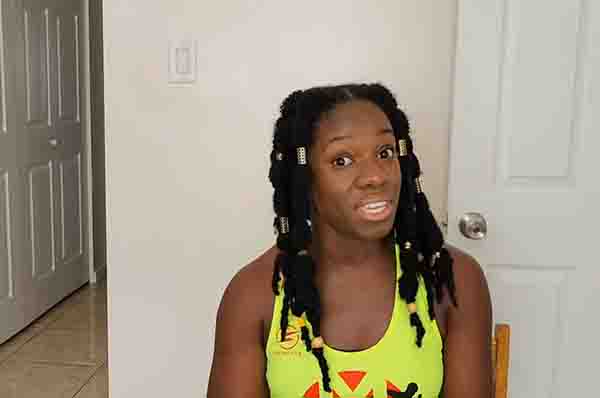
Before moving to the discussion let’s get to know about the 4C natural hair type. Usually, 4C hair is coily hair that is very much dense and tight in nature. The strands are tight and springy and the curls are zig-zag in shape. This type of hair is more prone to shrinkage and dryness.
Factors to Consider When Choosing A Winter Protective Hairstyle For 4C Natural Hair
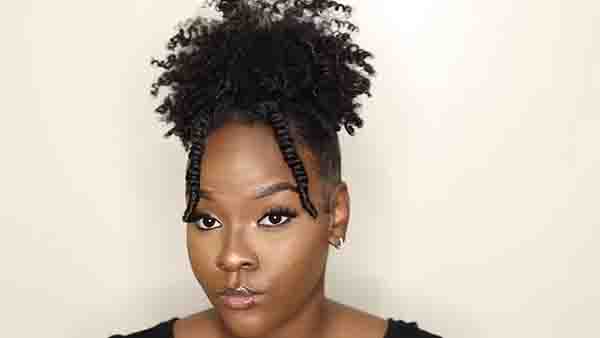
There are a few key things that need to be addressed when it comes to choosing a winter protective style for 4C natural hair. We have discussed some of them below.
a. Retention of moisture
In winter the moisture of hair fades away and the hair gets dry. That’s why going with a protective style that can retain moisture is a must thing. Styles like locs, twists, braids, etc work best in this regard.
b. Time length of the style
Another thing that you need to keep in mind is, how much time you want to keep a hairstyle. There are some styles that last for a few days whereas some last for weeks. So, choose a style based on that.
c. Scalp health
Scalp health is very important. Go with a protective hairstyle gives enough room for moisturization and cleaning. An extra tight style may create more tension and discomfort on the scalp.
d. Hair porosity
Hair porosity plays an important role in choosing a style. If your hair has low porosity then it will tend to resist more moisture. In this case, styles that enable you to easily apply hair products should be your choice.
On the hand if your hair is high in porosity that means it will absorb moisture quickly but it will go way pretty fast as well. In this regard, styles that provide extra protection and sealing should be your choice.
Common Challenges People Face with 4C Natural Hair During Winter
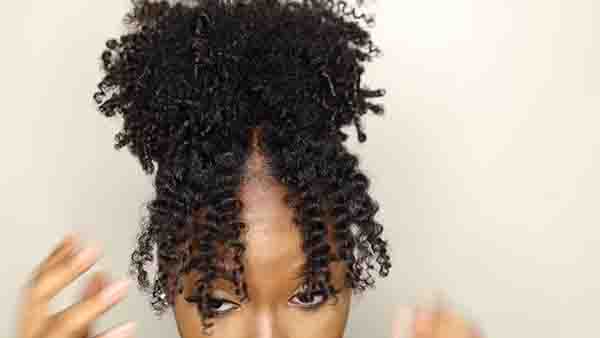
One of the most common attributes of the winter season is that it isn’t that much flexible for hair or hair growth. Usually, people end up facing a lot of issues during this time period. We will know about some of those in this section.
a. Dryness and breakage
One of the most common issues with winter is that within this time frame, the air gets dry. The weather takes away the moisture of the hair. This eventually makes hair more dry and prone to breakage.
b. Itchiness and dryness in the scalp
In winter, the scalp also gets dry which may cause itchiness and other uncomfortable situations. You may also need to give extra attention to dealing with them.
c. Less access to light
Another problematic state of the winter season is there is not enough light in the outer atmosphere. Enough sunlight is necessary for the production of vitamin D that you work on the overall health of hair. So less sunlight is a hazard in this regard.
How to Take Care of Your 4C Hair During Winter
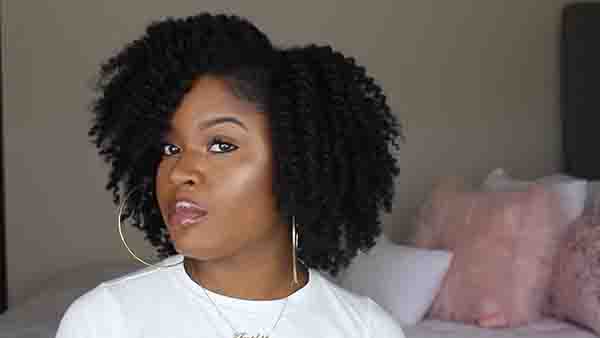
We have talked about some of the problems or challenges that we may have to face with our 4C natural hair during the wintertime. Here, we will see the measures that you can go with so that you can take care of your hair in the good way possible.
Deal with breakage and damage

a. Deep conditioning
In the winter season, deep conditioning is an effective move. Deep condition your hair on a regular basis during this time. Use a good quality conditioner that has nourishing ingredients in it.
b. Using scarf while sleeping
Another way to prevent breakage is to cover your hair with a scarf or things like that before going to sleep. This will prevent breakage during bedtime.
c. Avoid heat styling
Try to avoid heat-styling products in winter. Usually, this time the air gets dry. This makes the hair dry as well. So, if you do heat styling your hair will be more prone to breakage.
d. Avoid excessive washing
Don’t overwash your hair in winter. Overwashing may take away the natural oil of your hair. This can affect your overall hair health. So, make sure you don’t overdo it.
e. Keep your scalp clean and moisturized
Keeping your scalp moisturized and clean is a must to avoid breakage. Use good quality shampoo when it comes to washing. You can also use serum or scalp oil to keep it moisturized.
Products to go with
a. Sulfate-free shampoo
There is actually no problem with using a shampoo that has sulfate in it. But using it too often can make your hair dry out. So, it’s better to go with a shampoo that is free of sulfate.
b. Heavy oils and butter
Another good way to care for your 4C hair in winter is to use thicker or heavier oil or butter. They keep the moisture level of the hair high which is good for hair health. Make sure you use a limited amount of these kinds of products as overuse may harm your hair.
c. Alcohol-free gel
Using gel is a good move to make your hair look shiny. The problem with alcohol-mixed gel is that they make the hair dry out. There are plenty of alcohol-free options available. Go with any of that.
Tips and tricks
Trim: Trim your hair at the very beginning of winter. The edges of your hair are more prone to breakage during the winter season. To avoid split ends, cut them off.
Minimize heating tools
Use heating tools such as flat irons and blow dryers as less as possible during the winter season. Using them too often can make your hair break more. That’s why it’s better to avoid heat styling. If you really need it, go with the lowest setting.
Get a humidifier
Get yourself a humidifier to make the air of your surroundings moistured. In winter the air gets dry which affects the hair. Humidifiers in this regard can keep your home in a stable state that will enhance your hair health.
Benefits of Wearing Protective Hairstyles for 4C Natural Hair During Winter
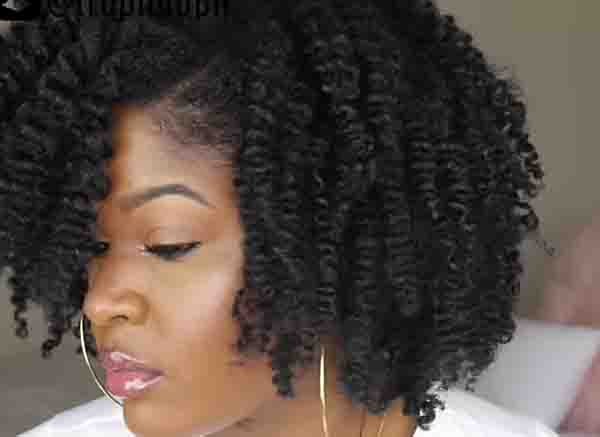
Going with a protective style during the winter season has a lot of benefits. In this section, we will discuss that.
a. Less exposure to harsh weather
The most basic yet fundamental benefit of a protective style is that it let doesn’t let you get exposed to the harsh chilling weather of the winter. This lets your hair stay in a very much protective state.
b. Less breakage and manipulation
Another best part of a protective style is that when you have a style, there is not much room left for manipulation. This lets the hair less extra care or hand. So the chances of hair breakage get lessened.
c. Retained moisture
Protective styles retain more moisture than usual. As it doesn’t let your hair get exposed to harsh weather, the moisture level of hair remains stable.
d. Versatility
The very first thing a protective hairstyle provides is the style itself. During the winter it’s a bit hard to maintain a different style or let your hair go under manipulation. But going with a particular protective style takes away the headache.
Winter Protective Hairstyles For 4c Natural Hair
There are various protective styles that will go quite well with your 4C natural hair. Let’s dive in and know about some of the best ones.
1. Braidless crochet braids
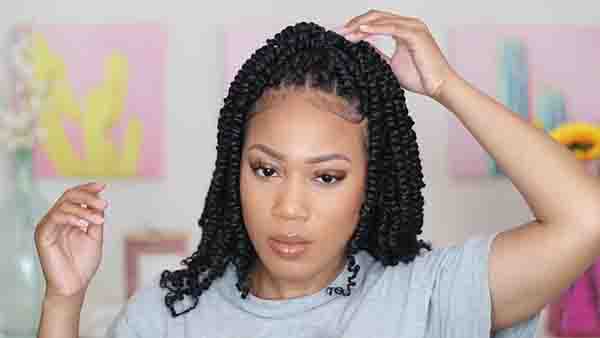
Braidless crochet braids provide an excellent protective barrier that shields the hair from harsh weather elements like wind, snow, and low temperatures.
Additionally, because there is no braid foundation, this hairstyle allows for greater flexibility and movement, which is essential during the winter season when wearing hats, hoods, and scarves that can easily snag and damage hair that is tightly braided.
Moreover, braidless crochet braids are an ideal style for those who prefer not to use heat on their hair.
Using a braidless crochet technique, the extensions are simply looped onto the hair, requiring no heat or glue. This avoids any potential damage that could occur to the hair from heat styling, making it an even more protective style.
2. Box braids
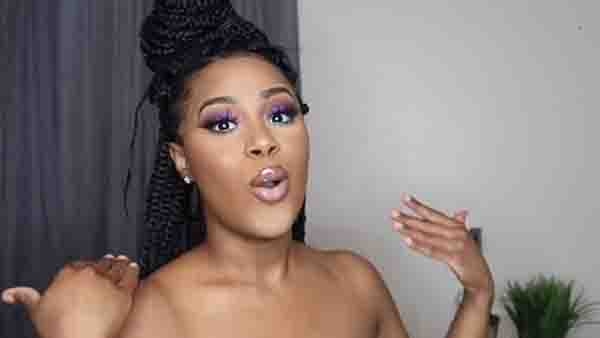
During winter, the air becomes dry and cold, which can cause the hair to become brittle and dry. This can result in breakage and damage to the hair.
However, box braids can help prevent this damage by providing a protective layer around the hair. The braids keep the hair moisturized and reduce the exposure of the hair to the harsh winter elements.
Moreover, box braids are a low-maintenance hairstyle that requires minimal effort to maintain. During winter, many people tend to avoid washing their hair frequently due to the cold weather.
With box braids, you can keep your hair clean and healthy by simply using a gentle shampoo and a leave-in conditioner. This makes box braids an ideal style for the winter season when hair care routines can become challenging.
Another reason why box braids are perfect for 4c hair in the winter season is that they are versatile and can be styled in various ways. You can wear them in a ponytail, bun, or simply let them flow down. This allows you to switch up your style and keep your look fresh and exciting throughout the winter season.
3. Ponytail
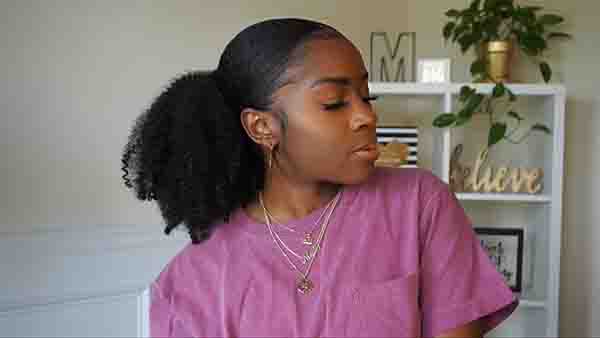
Ponytails are very versatile and can be styled in various ways, from sleek and straight to curly and voluminous. This means that you can choose a style that suits your hair type and personal preferences.
Second, ponytails are easy to maintain and can be done quickly, making them an ideal choice for busy individuals who don’t have a lot of time to spend on their hair. With a few simple steps, you can create a polished and professional look that will last all day.
Third, ponytails can help to protect your hair from the harsh winter weather, including cold winds and snow. By keeping your hair in a tight and secure style, you can prevent it from becoming tangled, matted, or damaged.
Finally, ponytails are a great way to show off your natural hair texture and length. Whether you prefer a sleek and polished look or a more voluminous and curly style, a ponytail can help to showcase your hair’s natural beauty and versatility.
4. Bantu knots
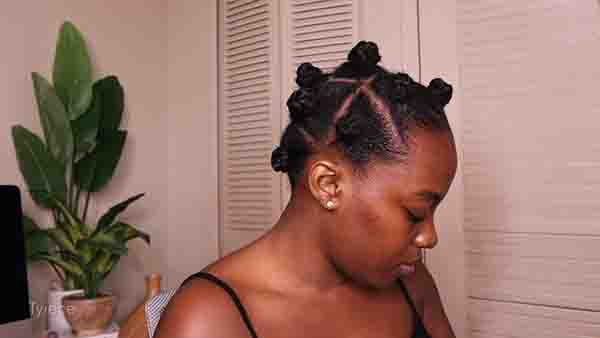
Bantu knots are also perfect for the winter season. The cold and dry winter weather can wreak havoc on natural hair, causing it to become dry, brittle, and prone to breakage. However, Bantu knots can help combat these issues in several ways.
Firstly, Bantu knots help to lock in moisture in the hair, which is especially important during the winter months. As the knots are tightly coiled, they help to keep the hair strands close together, preventing moisture from escaping. This helps to keep the hair hydrated, nourished, and less prone to damage.
Secondly, Bantu knots are a low-manipulation hairstyle. This means that once the knots are in place, there is very little need to manipulate or style the hair further. This is great for the winter season when the hair is already fragile due to the dry weather. The less you manipulate your hair, the less likely it is to break or become damaged.
Finally, Bantu knots are a great way to add some fun and style to your winter hair routine. With the colder weather and darker days, it’s easy to fall into a hair rut and stick to the same styles day after day. But with Bantu knots, you can switch up your look and add some variety to your hair routine. Plus, they can be dressed up or down, making them a versatile option for any occasion.
5. Feed-in braids

Feed-in braids is a kind of braid that is made with hair extension. It’s also known as invisible braid. This braid is made by sectioning the hair into small parts and then adding extensions to each part.
This protective style gives you a natural look compared to other braiding styles. The extension blends so well with the natural hair that it becomes hard to distinguish it separately.
Also, feed-in braids act as a shield. This protects the scalp from the external elements of the weather.
FAQ
To keep 4C hair moisturized and growing, it’s important to use a moisturizing shampoo and conditioner, apply a leave-in conditioner, use natural oils such as coconut or jojoba oil, deep condition regularly, avoid heat styling and protective style frequently.
4C hair tends to shrink because of its tightly coiled structure. As the hair strands curl and coil, they shorten in length, causing the overall hair to appear shorter.
Protective styles that help hair grow the fastest include braids, twists, cornrows, and wigs. These styles keep the hair protected from harsh elements and reduce manipulation that can cause breakage and damage.
To keep 4C hair soft, it’s important to moisturize frequently, use a leave-in conditioner, avoid heat styling and use natural oils such as coconut or jojoba oil to seal in moisture.
Braids, twists, and cornrows are some of the least damaging protective styles as they keep the hair protected and minimize manipulation.
It’s recommended to keep 4C hair in protective styles for at least 2-4 weeks before taking them down to prevent breakage and damage. However, it’s important to give your hair a break in between protective styles.
To prevent 4C hair from locking, it’s important to detangle regularly, avoid tight hairstyles, and keep the hair moisturized.
While 4C hair is fragile, it’s not necessarily the most fragile. Proper care and maintenance can help minimize breakage and promote healthy growth.
Yes, 4C hair can grow without protective styling. However, protective styles can help reduce breakage and damage, leading to faster and healthier growth.
Box braids, crochet braids, and twists are some of the braids that don’t damage the hair when installed and maintained properly.
Overuse of heat styling tools, harsh chemicals, and tight hairstyles can all cause damage to 4C hair.
4C hair can be hard to manage because of its tightly coiled structure, which can make it prone to tangling, breakage, and dryness. Regular moisturizing and protective styling can help make it more manageable.
Protective styles such as braids, twists, and wigs are great options for styling 4C hair in the winter as they protect the hair from the harsh elements and reduce manipulation.
Box braids, crochet braids, and twists are some of the braids that don’t pull out the edges when installed and maintained properly.
To protect African hair in winter, it’s important to keep the hair moisturized, use protective styles, wear a hat or headwrap, and avoid heat styling.
Yes, wearing braids in the winter is a good way to protect the hair from the harsh elements and reduce manipulation.
Yes, protective styles are a great way to protect the hair during the winter months.
Box braids, twists, cornrows, and wigs are some of the best braids for winter as they provide maximum protection.
Box braids, twists, and cornrows are some of the most protective braids as they keep the hair secured and minimize manipulation.
It’s recommended to keep a protective style in for at least 2-4 weeks before taking it down. However, it’s important to give your hair a break in between protective styles to avoid damage.
Passion twists are a great protective style for winter as they are low maintenance and provide good protection for the hair.
It’s recommended to moisturize your hair at least once a week while in a protective style to keep the hair hydrated and healthy.
Protective hairstyles such as twists, braids, and weaves can help 4C hair grow because they reduce manipulation and breakage. Low manipulation hairstyles such as bantu knots, braid-outs, and twist-outs can also be helpful for retaining length.
A healthy diet rich in nutrients such as protein, biotin, and vitamins A, C, and E can help promote faster growth for 4C hair. Consistently caring for your hair by keeping it moisturized, avoiding harsh chemicals, and protecting it with styles can also contribute to faster growth.
It is a common misconception that 4C hair grows the slowest, but all hair types have the potential to grow at the same rate. However, due to its unique texture, 4C hair may appear to grow slower because it is prone to shrinkage and breakage.
Water is the best moisturizer for 4C hair, so it is important to hydrate your hair daily. You can also use a leave-in conditioner, natural oils like coconut or jojoba oil, and a hair butter to seal in moisture and promote healthy hair growth.
Cutting 4C hair does not directly make it grow faster, but regular trims can help prevent split ends and breakage which can ultimately lead to healthier hair and retention of length.
Yes, it is important to moisturize 4C hair daily to prevent dryness and breakage. You can use a water-based leave-in conditioner, natural oils, and hair butters to keep your hair hydrated and healthy.
The length that Type 4C hair can grow to varies from person to person, but with proper care and maintenance, it can grow to great lengths. On average, hair grows about 0.5 inches per month.
It is recommended to wash 4C hair every 7-10 days to avoid stripping it of its natural oils. However, the frequency of washing can vary depending on your hair’s individual needs and lifestyle factors.
The stages of 4C hair growth are the same as other hair types: anagen (growth), catagen (transitional), and telogen (resting). However, the unique texture of 4C hair can make it difficult to distinguish these stages visually.
Let’s Wrap It Up
Winter is a lovely season. But for your hair it definitely is not easy to deal with kind of time. That’s why, take utmost care of your hair in this period. Pay extra attention so that you don’t end up having a damaged set of hair.
If you have 4C natural hair then you are quite lucky as you have natural curls. Go with the protective styles we have discussed to have a stylish winter look.
So! That’s it from our side. We hope you will benefit from the above discussion. Wishing you all the best for upcoming winter days.

